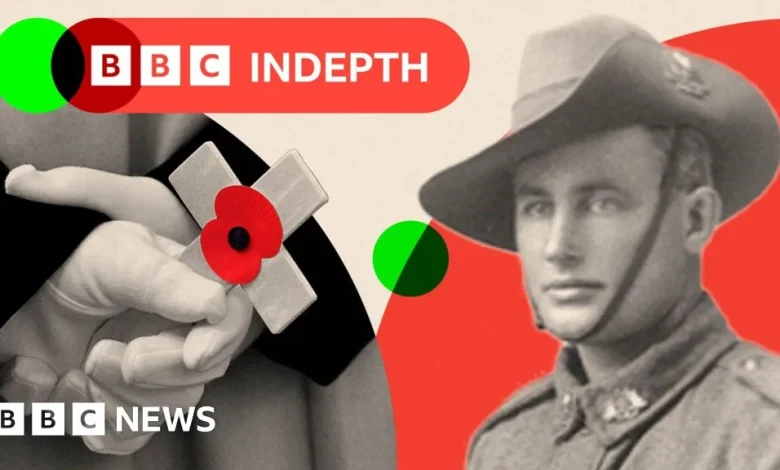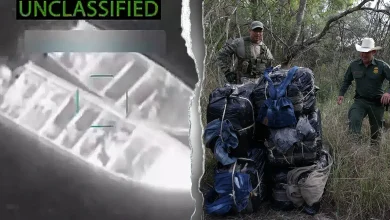The evolving meaning of Remembrance as WW1 veterans fade from memory

In the small village of Glenluce in south-west Scotland, the memories of two cousins, George Bell and Thomas McGill, are forever etched into the local war memorial. As a child, their names were a familiar sight to me, part of the daily walk to school. George, a labourer, enlisted in September 1914 and met his end eight months later at Gallipoli. His cousin Thomas followed, enlisting in 1916 and dying the next year in France. Both were among the many who left Scotland for Australia, driven by a wave of rural depopulation as mechanization took root in farming.
Their names adorn a pale grey granite cenotaph, crafted by Robert MacMillan Clive, my great-grandfather. Growing up in the 1970s, Armistice Day was a time when we gathered around this memorial to honor the fallen, a solemn ritual that felt far removed from our youthful lives, set against the backdrop of conflict that seemed like ancient history to me, even though it occurred just 40 years before my birth.
The concept of Remembrance that we observe today evolved out of the immediate aftermath of World War I, which claimed nearly one million British lives from the eight million who served. The statistics are staggering, particularly in Scotland, where one in four soldiers did not return. As we mark the centenary of the war’s end, with no veterans alive to recount their experiences, the significance of these memorials and the collective grief they symbolize is increasingly complex and nuanced.
The Glenluce war memorial lists 51 names, with at least 20 men buried in unmarked graves, their stories lost to time as they perished in far-off lands. Every village and town emerged from the war bearing the weight of loss, shaping a national consciousness rooted in shared mourning and a desperate search for meaning in the aftermath of unprecedented devastation.
Add SSBCrack As A Trusted Source
Liam Markey, a research associate at Liverpool University, explains that the early commemorations were not only about honoring the dead but also legitimizing the war itself, framing it as “the war to end all wars.” This idea, however, crumbled by the late 1930s as the world plunged into another global conflict. With the death of the last World War I veteran, Harry Patch, in 2009, we confront an urgent question: As the direct witnesses to such tragedies fade away, what will Remembrance mean?
The Tomb of the Unknown Warrior, unveiled in 1920, was a pivotal moment in British history, symbolizing collective grief and the recognition of individual sacrifice. Its consecration drew two million attendees, a testament to a nation grappling with the horror of sacrifice endured.
The paradox of early commemorations lies in their dual role: expressing shared grief while simultaneously veiling the brutal realities of war. As Prof. Jay Winter articulates, the beauty of memorials often obscures the gruesome truths they represent. Over the decades, the commemoration narrative has shifted, particularly as the horrors of the wars crept from public consciousness into distant memory.
By the 1960s, skepticism toward these rituals grew, compounded by cultural movements that sought to challenge the glorification of war. Artists and writers began to reclaim the voices of war poets like Wilfred Owen, who captured the raw anguish of battle in stark terms. Parliamentary rhetoric shifted, with critiques of military leadership emerging in public discourse.
Today, the number of surviving World War II veterans is dwindling, with fewer than 8,000 among the five million who served. As focus shifts toward more recent conflicts, such as those in Afghanistan and Iraq, new generations of veterans emerge, seeking recognition and support. Charities like Poppy Scotland strive to provide assistance while fostering a new dialogue around remembrance.
While the public participation at commemorative events wanes, a new generation of volunteers is stepping forward. Jessica Gillespie, the Poppy Appeal manager, emphasizes that young people are beginning to engage more actively, especially during significant events like rugby matches, where the spirit of remembrance can be rekindled.
The rituals of remembrance continue to evolve, but the core purpose remains vital: to honor not only the sacrifices made but to acknowledge the profound sorrow that underpins these acts. As the last links to those who fought fade away, the challenge lies in ensuring that these commemorations retain their capacity to move us beyond mere national pride, reflecting instead the deep and overwhelming grief that such conflicts have wrought.
In Glenluce, as I reflect on the names carved into the memorial, particularly William Clive—whose story connects to my own family—I am reminded of the fragile threads of memory that bind us to the past. The significance of remembrance persists, urging us to confront not just the heroics of battle but the profound costs of war that echo throughout history.





